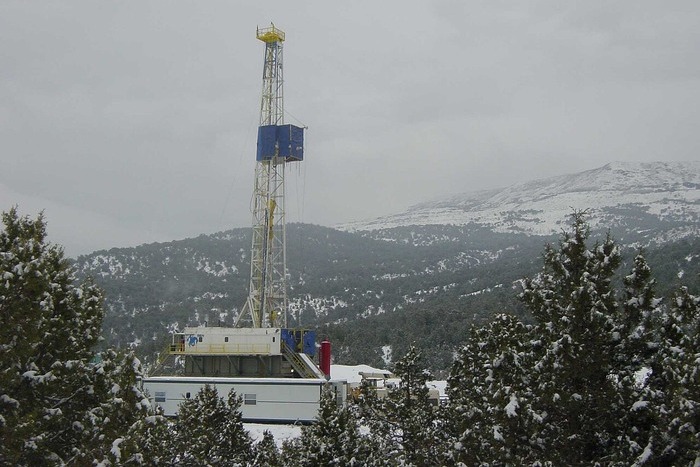The Financial Times reported that US shale oil products are “facing their gravest threat in years, as a sudden crude price sell-off triggered by Donald Trump’s trade war has pushed parts of the sector to the brink of failure, executives have warned”. Oil prices dipped after Trump escalated a trade war with China on Thursday, even as he announced a 90-day pause on tariffs aimed at other countries, reported Reuters. According to the NYT, oil prices rose to $62, after dipping sharply over the past week following Trump’s announcement of reciprocal tariffs on “liberation day”, trading as high as $72 a barrel and as low as $55. Falling oil prices indicate pessimism in economic activity and “can be a harbinger of a recession as manufacturers cut production, businesses cut travel costs and families rethink vacation plans”, the Washington Post reported. Bloomberg reported that Trump’s “trade war will pile costs onto the fast-growing US energy storage industry – and slow it down.”
Following meet with oil executives, Trump targets city & state climate laws in executive order
The Guardian reported that the US president Donald Trump has “taken aim” at city and state-led fossil fuel accountability efforts via a new executive order, which instructed the Department of Justice to “stop the enforcement” of state climate laws. The order says: “These state laws and policies are fundamentally irreconcilable with my administration’s objective to unleash American energy. They should not stand.” Bloomberg reported that the order directed “US attorney Pam Bondi to identify state laws or regulations that could impede the use of domestic oil and gas”. The order surfaced after oil executives blamed state climate laws in a recent meeting with the president. “It’s an example of how the industry is getting much of what it wants from the administration, even as Trump’s global tariffs have triggered a sharp drop in crude prices over the past week,” Bloomberg said.
India lead in new coal proposals in 2024, says Global Energy Monitor
According to the Global Energy Monitor (GEM) report, India accounted for one-third of new global coal proposals in 2024, with 38.4 GW capacity — the highest since 2015. The 10th edition of the Boom and Bust Coal report said 10 countries are now responsible for 96% of coal power capacity development, with China and India representing 87%.
Approximately 60% of the 38.4 GW of India’s new proposals are backed by state-owned entities (SOEs) using public funds, the BS reported citing the study. These new coal proposals have increased India’s total pre-construction coal plant capacity by over 75% from 2023, to 81.4 GW. The country’s operating capacity also saw a slight increase, adding 5.8 GW of new coal-fired capacity, while retiring 0.2 GW, resulting in a net increase of 5.6 GW — the highest growth in India’s coal fleet since 2019, the report said.
As the second-largest producer of coal after China, India depends on it to meet nearly 75% of its electricity demand. For the first time, India produced 1.04 billion tonne of coal in FY25. Together, India and China accounted for 92% of all newly proposed coal power capacity globally in 2024 (107 out of 116 GW).
China halts US LNG imports for longest since last trade war
China has not imported US liquefied natural gas (LNG) for 60 days in the “longest gap” in imports since the last US-China trade war, as “worsening” bilateral relations have led the Chinese buyers to “divert shipments”, Bloomberg reported.
No US shipments are currently heading to China, according Kpler, an analytics firm that tracks ship data. During US President Donald Trump’s first term, China didn’t take a shipment from the country for about 400 days through April 2020, according to ship-tracking data compiled by Bloomberg.
The current geopolitical conflict is beginning to decouple the world’s biggest LNG seller and buyer. Beijing slapped a 15 per cent tariff on U.S. LNG shipments from February 10 in retaliation to American levies, which was further exacerbated by another set of Chinese levies on all imports from the U.S.
About The Author
You may also like
Experts Call US’ Attack on Venezuela Driven by Oil, Risks Market Fallout
India to Expand Coal Power Capacity Until 2047 to Ensure Grid Stability and Energy Security
Rise in Fossil Fuel Burning is Making Floods Lethal in Asia
EU to waste billions on hydrogen pipelines in new PCI list, warns experts
Lula Pitches Fossil Fuel Phase-Out at COP30, But Can a Divided World Agree?

